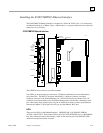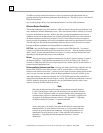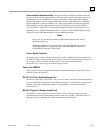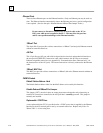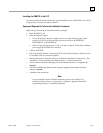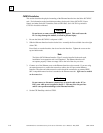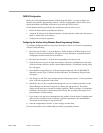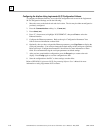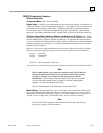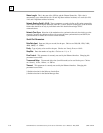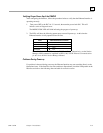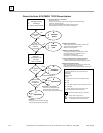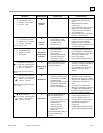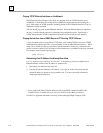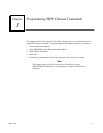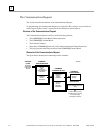
GFK-1541B Chapter 2 Installation 2-49
2
CMM742 Configuration Parameters
Ethernet Parameters
Configuration Mode:
This is fixed as TCP/IP.
Adapter Name:
A symbolic name representation of the associated IP Address. The character set
is listed in Chapter 6, “Network Administration Support”. The Adapter Name is associated with
the IP address used in Ethernet Global Data. If supported in the PLC programming software,
view all adapter names in Hardware Configuration by going to the Edit menu, choosing Rack
Operations, and selecting Name Resolution. Adapter names are listed in the Adapter Names tab.
IP Address, Subnet Mask, Gateway IP Address, and Name Server IP Address:
These values
should be assigned by the person in charge of your network (the network administrator). TCP/IP
network administrators are familiar with these parameters. It is important that these parameters
are correct, otherwise the Ethernet Interface may be unable to communicate on the network and/or
network operation may be corrupted. It is especially important that each node on the network is
assigned a
unique
IP address.
However, if you have no network administrator and are using a simple
isolated network
with no
gateways, you can use the following range of values for the assignment of local IP addresses:
10.0.0.1 First PLC
10.0.0.2 Second PLC
10.0.0.3 Third PLC
..
.
10.0.0.255 PLC Programmer TCP or host
Also, in this case, set the subnet mask, gateway IP address, and name server IP address to 0.0.0.0.
Note
If the isolated network is ever connected to another network, the IP addresses
10.0.0.1 through 10.0.0.255 must not be used and the subnet mask, gateway
IP address, and name server address must be assigned by the network
administrator. The IP addresses must be assigned so that they are compatible
with the connected network. Refer to Chapter 6, “Network Administration
Support”, for more information on addressing.
See also “Determining If an IP Address Has Already Been Used”.
Status Address:
The Status Reference Type is the location of the LAN Interface Status (LIS)
bits (16 bits) and the Channel Status bits (64 bits). The Channel Status bits are always located
immediately following the LAN Interface Status bits. The Status address can be assigned to %I,
%Q, %R, %AI, or %AQ memory. The default value is the next available %I address.
Note
Do not use the 80 bits assigned to the LIS bits and Channel Status bits for other
purposes or your data will be overwritten.



